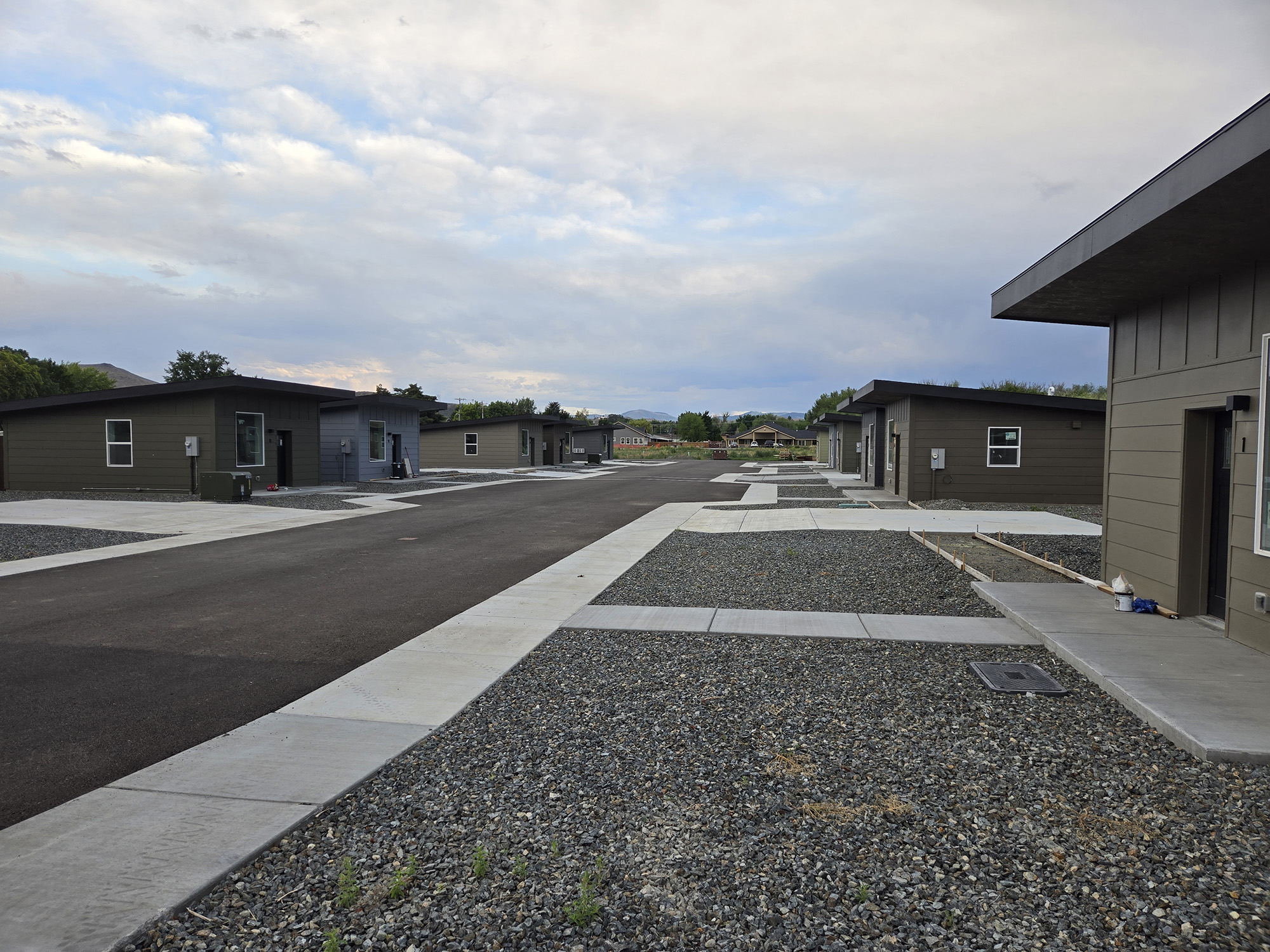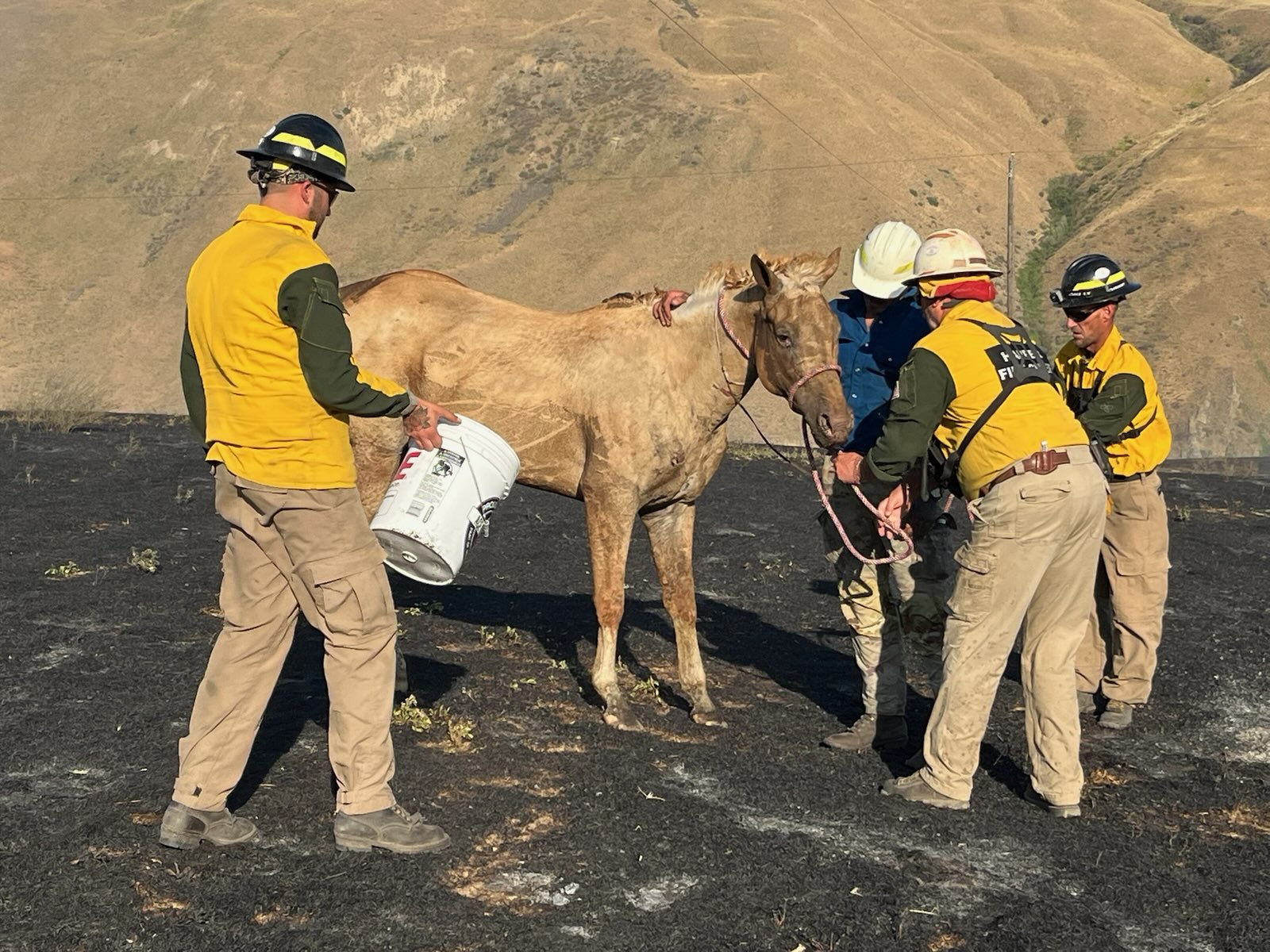Miners tired of delays
Published 11:42 am Friday, December 11, 2009
Miners say they’re missing out on record gold prices, and they blame
Trending
state and federal agencies’ sluggish progress in processing mining
plans.
“With the record gold prices we have an opportunity for economic
Trending
development, but the agencies are holding things up,” said Terry
Drever, a mine operator and past president and government affairs
officer for the Eastern Oregon Mining Association.
On private lands, Drever said mining permits and mining plans are
often held up for years by state agencies such as the Department of
Environmental Quality, Division of State Lands, Fish and Wildlife,
Department of Geology and Mineral Industries and others that have a
role in completing environmental impact statements and other legal
requirements.
“It’s not easy to get them all working together,” Drever said. “The
thing that takes the longest is getting all the agencies to complete
their work on the permits.”
Many delays stem from federal mandates such as the Clean Water Act,
Endangered Species Act and Public Lands Management Act, said Drever and
Chuck Chase, who’s executive director of the Eastern Oregon Mining
Association.
Despite years of frustration, and the loss of millions of dollars in legal fees and lost revenues, Chase said the mining industry is hopeful due in part to the efforts of Ken Anderson, ranger for the Forest Service’s Whitman Ranger District.
“In Baker County, at least Ken Anderson is working on mining plans,” Chase said, adding that Anderson’s predecessor “never processed a single mining claim” to his knowledge, even though “mining is a statutory right – not a discretionary activity.”
After four years of delays, Chase said he’s happy to hear that under Anderson’s leadership the Forest Service is about to complete court-ordered revisions to environmental impact statements that will clear the way for 49 mining plans along the North Fork of the Burnt River near Whitney.
“We are about to publish a final draft of the amended EIS,” Anderson said. “We are doing everything we can to make that happen.”
He said a federal court ruled more than four years ago that the original environmental study done by the Forest Service didn’t include enough analysis of potential sediment runoff as required under the Clean Water Act.
“The court said, if you want to approve those plans, you need to do some additional analysis,” Anderson said.
Anderson said he hopes to complete the process in time to allow miners to begin working their claims along the North Fork next summer.
All told, Anderson said there’s between 115 and 125 mining operations pending on the Whitman District. Most are small-scale operations where individual miners plan to prospect for gold in hopes of proving there’s enough valuable ore on their claims to interest mining companies.
In addition to the North Fork Burnt River claims, Anderson said his staff is working to complete environmental studies for 40 to 60 mining plans in the Granite and Sumpter areas.
There’s another 10 to 15 individual mining proposals scattered around the district.
“We are working to complete most of our mining plans around Baker County,” Anderson said.
He said the recent record high prices for gold have prompted miners to push to get their plans approved.
“When gold prices are up, those who have plans submitted without approval are missing the opportunity,” Anderson said.
“In this case, mining is a community interest,” he said. “Under the Forest Services charter, we still have clear policy to support mining abstraction when the mineral is there. We still have a strong policy to support the testing and extraction of mineral resources.”
That said, the agency, along with the BLM, requires that mining be done in an environmentally sustainable way without polluting streams, and under strict reclamation standards where mined land must be restored to a condition as good or better than it was before the mining occurred.
“We try to find a way to work with the (Clean Water Act) and the (Endangered Species Act) in favor of the extraction of minerals,” Anderson said.
While complying with federal laws adds to the cost of mining operations, Anderson said “it doesn’t preclude the operation from going forward.”
Jan Alexander, a former Forest Service employee and a miner, said she’s happy to see Anderson striving to complete mining permits and plans that have been pending for several years.
But Alexander contends that the BLM and other agencies have not been as prompt in meeting their statutory responsibilities to process mining plans, some of which have been languishing for a decade or more.
“It’s sad. In some cases people who filed mining claims with high hopes years ago, have died,” Alexander said. Others sold out because they felt like they were getting too old to handle the rigors of mining, or lost faith in the agencies and courts.
Alexander said she’s hopeful, though, that the high gold prices will entice a new generation of younger miners.
“When the price of gold was $400 an ounce, that was actually a pretty good price. You could make a little money at $400 an ounce. With today’s gold prices, even a small operation can be very profitable,” Alexander said.
Nonetheless, she is concerned about the future of mining in Baker County and across the United States, due to a recent EPA announcement.
“Watch out, now that EPA has come out saying global warming is dangerous to individuals,” Driver said. “There’s a concern that this administration could regulate and tax mining and other natural resource industries out of existence.
“Then we’ll be completely dependent on China and other countries for everything. We’ll just be a consumer society. We won’t make anything,” she said.
Jason McClaughry, a field geologist with the Oregon Department of Geology and Mineral Industries office in Baker City, acknowledged that there is a perception that Oregon has more environmental restrictions inhibiting mining and other industries.
But he questions the validity of that perception.
“The Endangered Species Act, the Clean Water Act and other environmental protection laws are federal laws, and every state has to comply with those laws,” McClaughry said.
Mark Ferns, regional geologist with the DOGAMI office in Baker City, said budget cuts are at least partly to blame for delays in processing mining claims and permits, which are handled out of the DOGAMI office in Albany.
In some cases, Ferns said, mining companies agree to pay part of the costs of doing environmental studies to speed that work and to offset delays caused by agency budget cuts.
“The problem for small mining companies is they don’t have enough cash reserves to sustain them through the permitting process,” Ferns said.
Sometimes the processing of environmental studies required for mining plans can be held up by the discovery of archeological sites, such as ancient tribal encampments, or fossil beds.
Ferns said he and McClaughry spend much of their time working on geologic mapping projects all over the state, including mapping of gold and other minerals, oil wells, groundwater and geo-thermal resources.
The resulting maps can help prospectors pick areas to search for gold and other potentially valuable deposits.
Ferns and McClaughry also help people file their initial mining claims, and they refer tourists and other recreational prospectors to mining co-ops like the Eastern Oregon Miners and Prospectors Co-op, where they can join and try their hand at panning for gold on claims already established by the cop-ops, Ferns said.
Ferns estimated that 200 mining plans are currently in the processing pipeline, and Alexander said most of those have been held up for years by regulatory red tape, as well as appeals or lawsuits.
Alexander said some of the Oregon agencies that process mining plans are working more closely with miners than they were a few years ago, but she said the delays are still too long, especially now when delays might be preventing miners from cashing in on record high gold prices.
Despite Anderson’s work to remove some of those impediments, Chase said mining plans approved the Forest Service and BLM are subject to a 45-day public comment period, during which mining opponents can file appeals.
Chase said the biggest delays are often imposed by judges who in his opinion favor case law that supports environmental positions over long-established statutory private property rights guaranteeing the right of mining claim holders to extract minerals.
Federal judges have also been generous to environmental groups, Chase contends, by awarding them attorney fees, even when they lose a lawsuit against a federal agency or mining company.
Delays that stall mining operations that could create hundreds of jobs in and around Baker County are especially frustrating considering unemployment rates have been near or above 10 percent this year, Chase said.
“What people don’t understand is that our government is driving our mining industry overseas, just like they have with everything else, including the timber industry,” he said.









